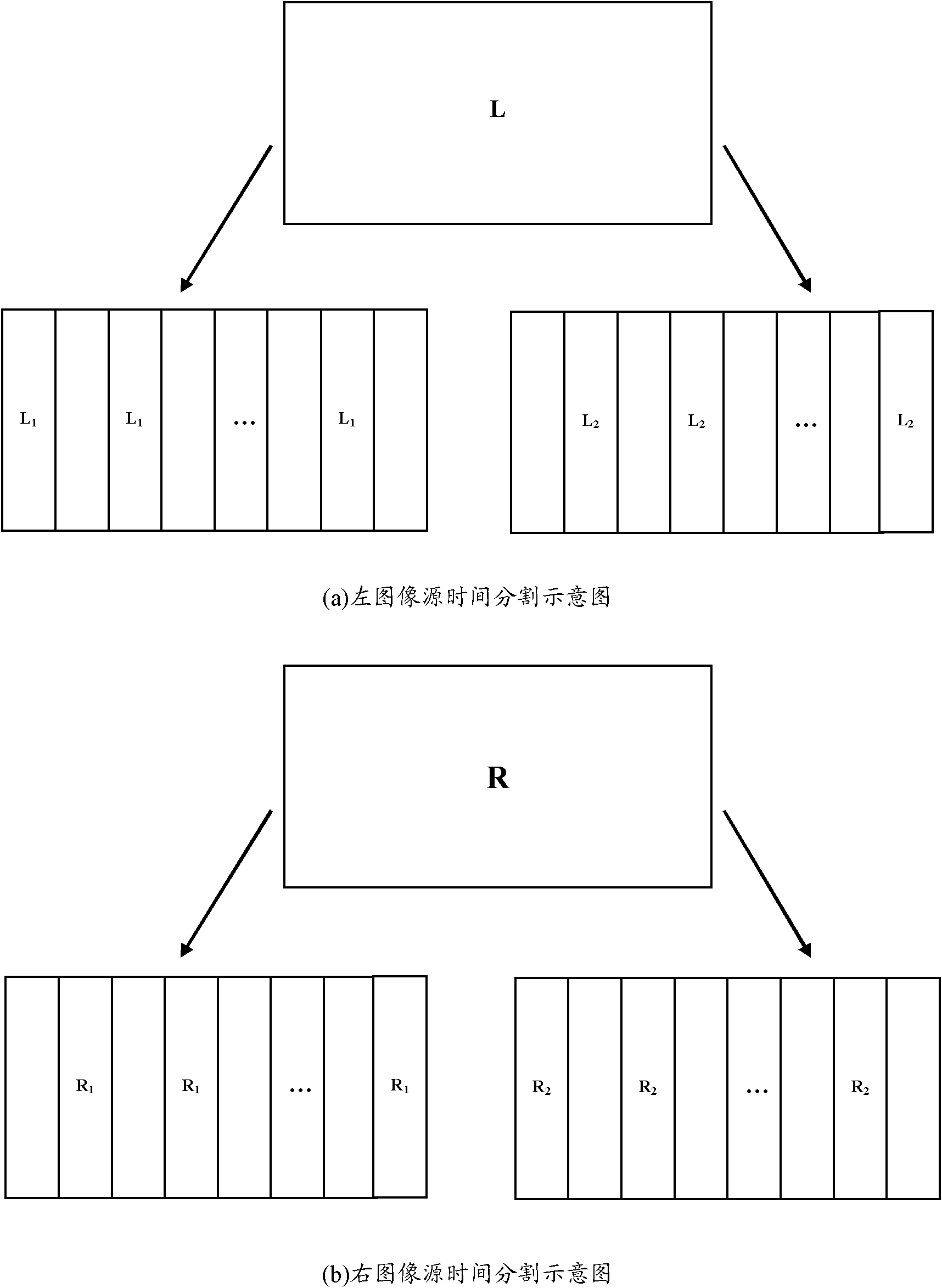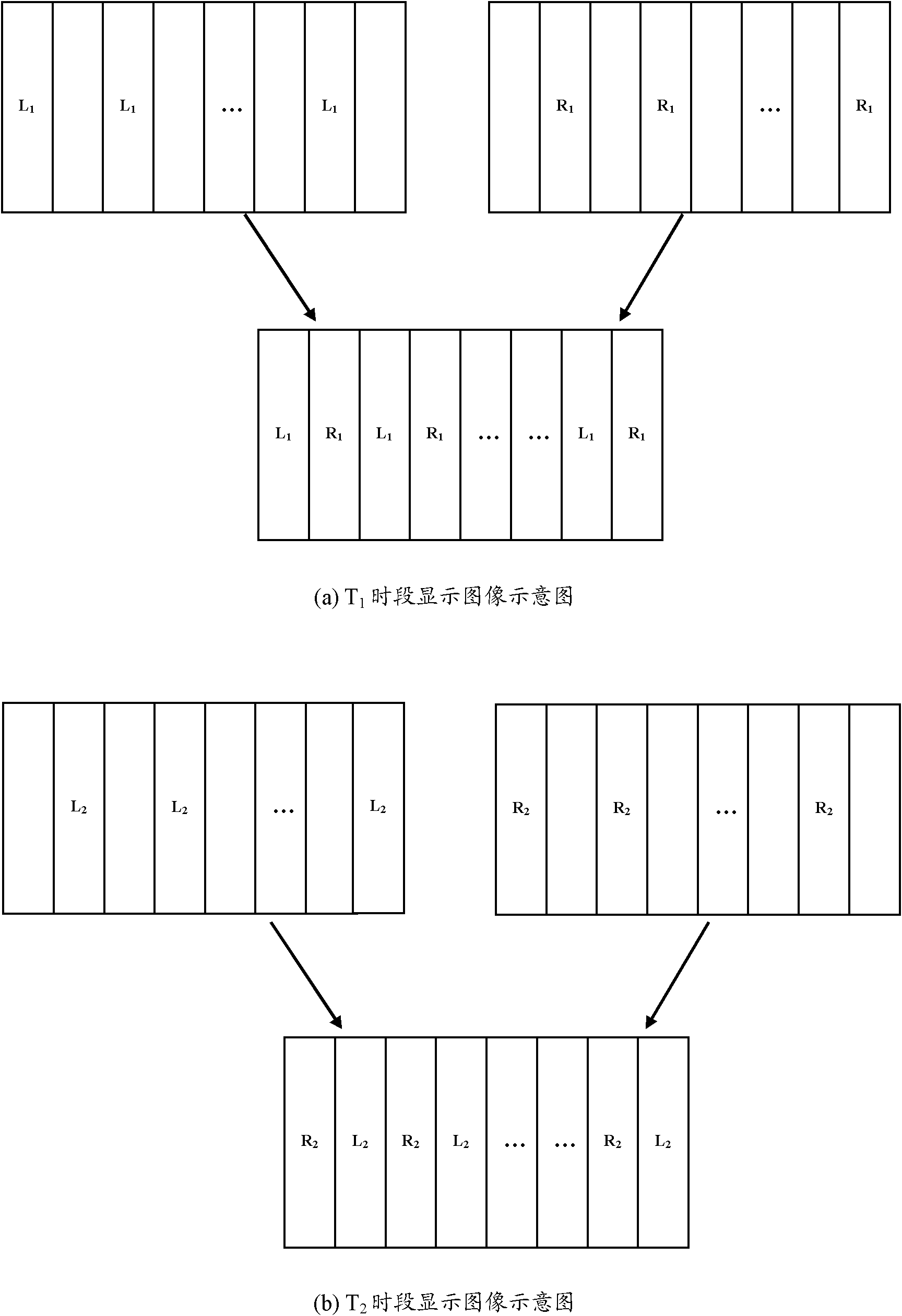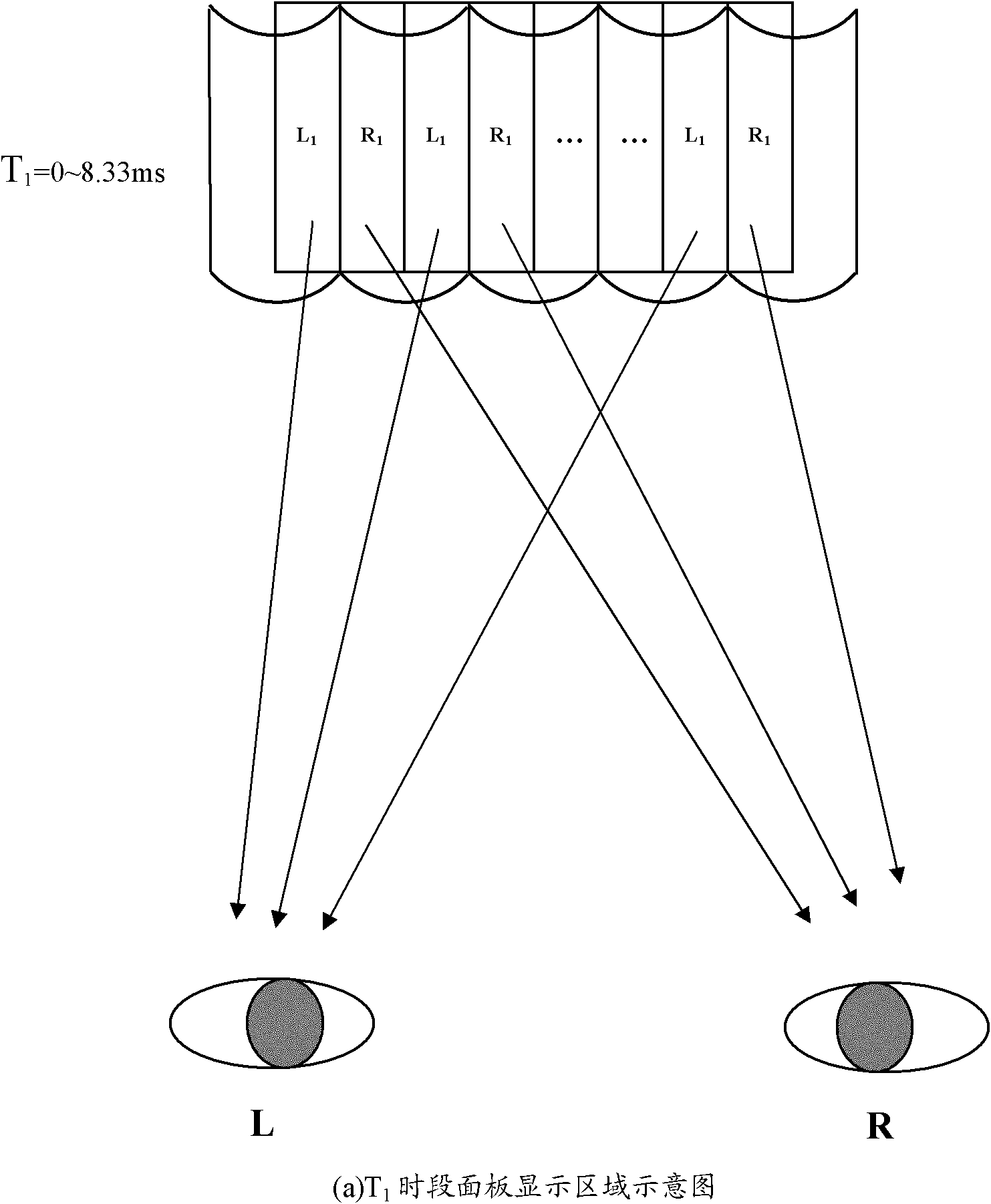Method and device for driving dynamic fast response of liquid crystal lens
A technology of liquid crystal lens and driving method, applied in static indicators, optics, instruments, etc., can solve the problem of inability to respond quickly to multi-electrode liquid crystal lenses, and achieve the effect of solving fast dynamic response and speeding up
- Summary
- Abstract
- Description
- Claims
- Application Information
AI Technical Summary
Problems solved by technology
Method used
Image
Examples
Embodiment 1
[0065] Embodiment 1: A driving voltage is applied to the edge electrodes E1 and En of each single liquid crystal microlens.
[0066] (11) The first half cycle driving process of each driving cycle includes the following steps:
[0067] (a1) Applying the first driving voltage on the edge electrodes E1 and En of each single liquid crystal microlens:
[0068] See eg Figure 9 In the section a of the driving voltage waveform of the edge electrodes E1 and En shown, the amplitude of the first driving voltage is V1, and the amplitude of the first optimized voltage is V2. At t=0, each single liquid crystal microlens A first driving voltage with an amplitude of V1 is applied to the edge electrodes E1 and En at the same time, and the first driving voltage is an overdriving voltage with a frequency lower than the separation frequency fc, and the application time is a first time period Δtr. At this moment, the first driving voltage is an overdriving voltage. The so-called overdrive vol...
Embodiment 2
[0091] Embodiment 2, on the basis of Embodiment 1, cancel the second driving voltage applied on the middle electrode E(n+1) / 2 in the first cycle:
[0092] In embodiment 2, the driving process on the edge electrodes E1 and En of each single liquid crystal microlens, and the second middle electrode (E2, E3..., E(n+1) / 2 of each single liquid crystal microlens -1, the driving process of E(n+1) / 2+1...En-1) is the same as that in embodiment 1, refer to the (a1), (c1) parts in embodiment 1, not here Let me tell you more.
[0093] The driving process of the middle electrode E(n+1) / 2 of each single liquid crystal microlens is described in detail below:
[0094] see Figure 12 , in the first period, in the a section of the driving process of each single liquid crystal microlens intermediate electrode E(n+1) / 2, at t=0, each single liquid crystal microlens intermediate electrode E(n+1 ) / 2, the second optimal voltage is applied, the amplitude of which is V4, and the application time is ...
Embodiment 3
[0097] Embodiment 3, on the basis of embodiment 2, the sub-intermediate electrodes (E2, E3..., E(n+1) / 2-1, E(n+1) / 2+1...En-1 ) on the third drive voltage applied.
[0098] In embodiment 3, the driving process on the edge electrodes E1 and En of each single liquid crystal microlens is the same as that in embodiment 1, see part (a1) in embodiment 1, and the middle of each single liquid crystal microlens The driving process of the electrode E(n+1) / 2 is the same as that of Embodiment 2, refer to Embodiment 2, and will not be repeated here.
[0099] The sub-intermediate electrodes (E2, E3..., E( n+1) / 2-1, E(n+1) / 2+1...En-1) driving process:
[0100] see Figure 13 , in the driving process of each single liquid crystal microlens sub-intermediate electrode (E2, E3..., E(n+1) / 2-1, E(n+1) / 2+1...En-1) Section a, at time t=0, in each single liquid crystal microlens sub-intermediate electrode (E2, E3..., E(n+1) / 2-1, E(n+1) / 2+1.. No driving voltage is applied to En-1), and the time of n...
PUM
 Login to View More
Login to View More Abstract
Description
Claims
Application Information
 Login to View More
Login to View More - R&D
- Intellectual Property
- Life Sciences
- Materials
- Tech Scout
- Unparalleled Data Quality
- Higher Quality Content
- 60% Fewer Hallucinations
Browse by: Latest US Patents, China's latest patents, Technical Efficacy Thesaurus, Application Domain, Technology Topic, Popular Technical Reports.
© 2025 PatSnap. All rights reserved.Legal|Privacy policy|Modern Slavery Act Transparency Statement|Sitemap|About US| Contact US: help@patsnap.com



